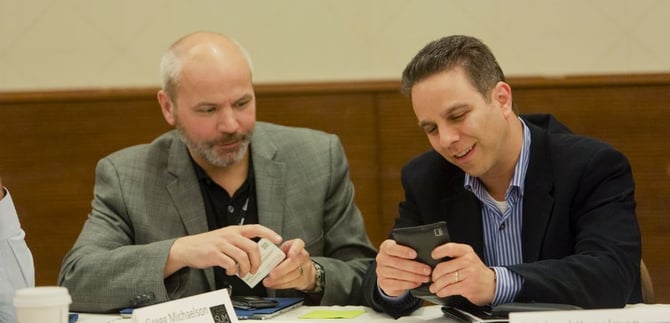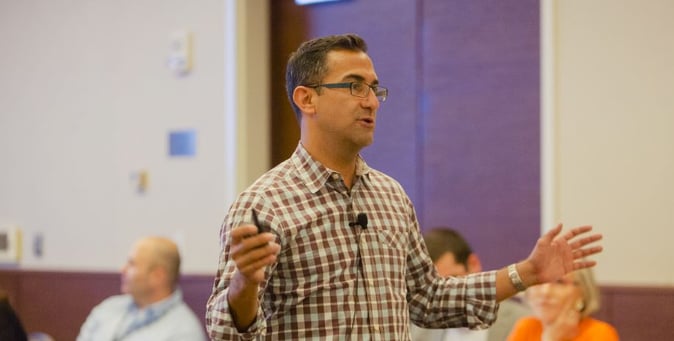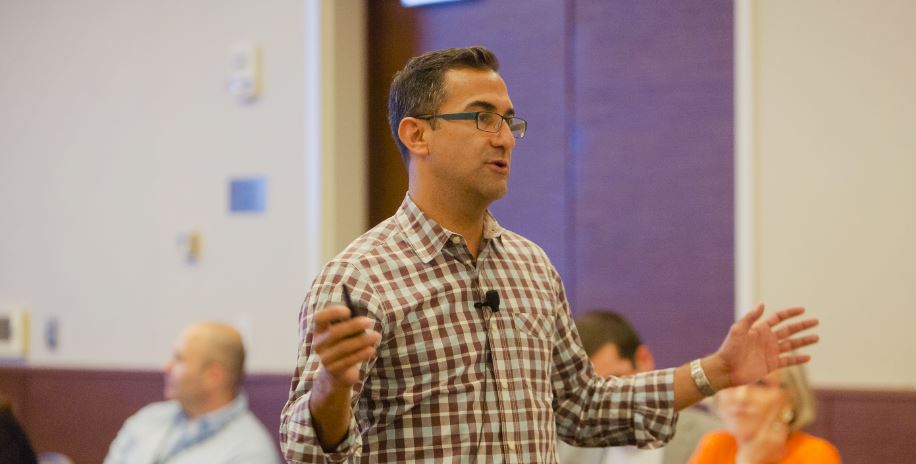At our recent CEO Summit, Rodrigo Martinez, Life Sciences Chief Strategist at IDEO ran a working session on using product design and innovation as a growth lever. He encouraged the group to ask ourselves, "how much is good design worth to you?" The answer: A LOT.
Think about this as a consumer - you fundamentally know and feel the difference when you experience great design. Chances are that if the provider of that great design experience is/was an IDEO client, then the company was encouraged to think differently and deeply about design based on the following principles:
1. B2U (the user)
Great design, whether delivered as a service or sexy product UX, has a major impact on growth, because it incites the senses while leaving a positive brand impression and experience. B2B, B2C, B2B2C - no matter. Rodrigo says, “It’s all about B2U (the user).” I couldn’t agree more.
The lines have absolutely blurred between B2B and B2C through mobile and the consumerization of IT. Common sense rule applies, as well. If something is a bad analog experience, guess what? It’s also going to be a bad digital experience.
My lovely bride Nicole happens to be a brilliant designer. I’m always fascinated by her work; the approach she takes in analyzing and simplifying elements, thinking through the interplay between form and functional use to deliver a final product. IDEO takes this to the next level with a whole-brained approach to planning products, services and experiences. IDEO’s human-centered design method brings a range of diverse skills to the table to solve problems in a way that produces new growth options. These very same methods can be applied to company building in a growth-stage portfolio like Edison's.

2. Hierarchy Kills Innovation
Well, not in the literal sense, but this emphasizes the importance of perpetuating a culture in which all ideas, no matter from where or whom within your organization, are supported and not ridiculed. If not, innovation dies and you have some major behavioral change to take on.
Too many times, we fall into the trap of discounting contrarian views or those ideas that are not mainstream, but, in fact, these views are those that tend to be the most revolutionary... the ones that breed innovation, providing you are able to test and iterate quickly to manage risk out of the equation.
Agile development was invented to enable just this... to prototype ideas quickly to uncover whether new growth opportunities exist without marshaling a ton of resources. Start small and if it doesn’t work, no worries just kill it and move on quickly to the next idea.
How do you do execute this approach in your company, and as you contemplate current and future products?

3. Think to The Far Ends of The User Adoption Bell Curve
Interestingly, Rodrigo noted that extreme users are the best grounds for research and customer insights, while the middle of the user curve becomes your business strategy for complementing these insights and executing on them in a thoughtful and tested experience.
Key takeaway: Interview people that are early adopters and rabid users of your software or service. But don't forget to engage those folks who would never contemplate using it.
What can you learn from their experience, what are the common threads that matter to them? The inputs collected formulate the best feedback loop and research in analyzing and setting in motion new growth opportunities. And, you don’t need a large sample set of users in this process to collect great data.
What you do need, however, is a solid team of in-house interviewers focused on finding both "power users" and "non-users." Those that don’t use your current or future products/services, but may become future users, are the hardest to find. If you do find them, you can strike gold from understanding their POV and underlying workflows.
As a side note: IDEO sometimes uses Craigslist to find non-users. So employ any and all resources in this digital and crowdsourced age to cast the net.
4. Tap Into Diverse Skillsets
Lastly, the collection of diverse ideas and skillsets within a company matter when defining the go-to-market for existing and new products. Simple things like:
- Hire creative minds
- Involve colleagues from all areas of your company
- Staff up these product teams with entirely new experience to the industry
- Hire a freelance coder to get to a prototype quickly to see and feel can all jumpstart these efforts
The allocation of these resources and support network for the petri dish in which your colleagues live is so important to generate new, innovative ideas.
This session was most creative and inspiring. Check out the full session in this video:


